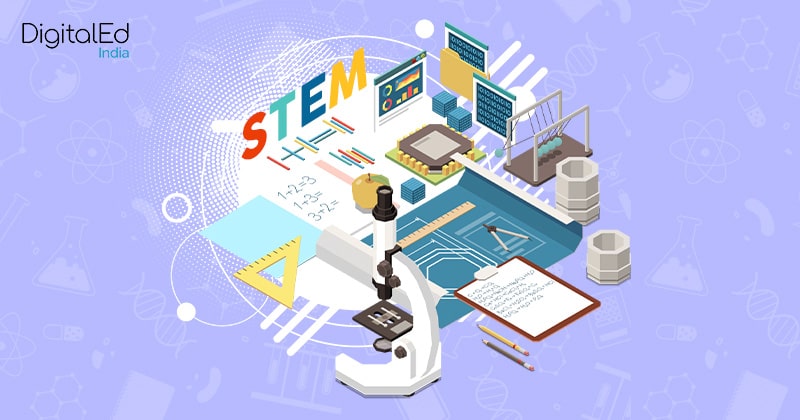In today’s fast-paced, technology-driven world, the demand for science, technology, engineering, and mathematics (STEM) skills has never been higher. With industries evolving rapidly and innovation at the core of global progress, students must be equipped with the knowledge and problem-solving abilities that STEM education provides.
STEM subjects are not just about learning theories; they are about fostering curiosity, critical thinking, and creativity. By making STEM education more engaging, educators can inspire students to explore new frontiers, develop essential life skills, and prepare for high-demand careers in various industries, from artificial intelligence to environmental science.
How Online STEM Education is Transforming Learning
With the advent of digital technology, online education has become a game-changer for students worldwide. Virtual classrooms, interactive simulations, and on-demand resources have revolutionized the way students learn STEM subjects. Online STEM education provides flexibility, allowing students to study at their own pace while gaining hands-on experience through virtual labs and coding platforms.
Moreover, online platforms connect students with expert educators, industry professionals, and peers across the globe. This digital approach enhances collaboration, making STEM subjects more interactive and enjoyable. Through video tutorials, gamified lessons, and AI-driven personalized learning, students can develop a deeper understanding of complex scientific concepts while remaining engaged and motivated.
Benefits of Hands-On Learning in STEM Education
While traditional lectures and textbooks have their place, hands-on learning is one of the most effective methods for STEM education. When students engage in experiments, robotics projects, or coding challenges, they gain practical experience that reinforces theoretical knowledge.
Hands-on STEM activities encourage problem-solving and teamwork. Whether designing a simple circuit, programming a robot, or conducting a chemistry experiment, students develop critical thinking skills that will benefit them throughout their academic and professional journeys. This experiential learning approach also boosts confidence, as students see the tangible results of their efforts.
The Role of Gamification in STEM Education
Gamification is an innovative strategy that has been transforming education by integrating game-like elements into learning experiences. In STEM education, gamified approaches—such as earning points, leveling up, and interactive quizzes—help make challenging subjects more engaging.
By incorporating gaming, students remain motivated to progress through lessons, tackle difficult problems, and retain knowledge more effectively. Online platforms offering STEM education often use leaderboards, rewards, and competitive challenges to keep students engaged. These techniques not only make learning fun but also enhance retention and application of STEM concepts in real-world scenarios.
Encouraging Diversity in STEM Fields

One of the biggest challenges in STEM education is ensuring inclusivity and diversity. Historically, underrepresented groups—including women and minorities—have faced barriers in pursuing STEM careers. To bridge this gap, educators and institutions are actively working towards creating inclusive learning environments.
Scholarships, mentorship programs, and targeted outreach initiatives play a crucial role in encouraging students from diverse backgrounds to explore STEM fields. By promoting equal opportunities and providing access to quality STEM education, the future workforce will be more diverse, innovative, and capable of solving global challenges.
The Impact of STEM Education on Career Opportunities
A strong foundation in STEM opens doors to a wide range of high-paying and impactful careers. Industries such as biotechnology, software development, renewable energy, and aerospace engineering are all driven by STEM professionals. As automation and artificial intelligence continue to reshape the workforce, individuals with STEM skills will have a competitive advantage.
STEM education does not just prepare students for technical jobs; it also equips them with analytical thinking, adaptability, and problem-solving abilities applicable across multiple industries. Even non-STEM careers benefit from these skills, as businesses increasingly rely on data-driven decision-making and technological innovation.
Challenges and Solutions in Online STEM Education
Despite the numerous advantages, online STEM education does come with its challenges. One major concern is the lack of hands-on laboratory experience for subjects like chemistry, biology, and physics. However, virtual labs and at-home experiment kits have emerged as effective solutions to bridge this gap.
Another challenge is maintaining student engagement in a digital environment. Without face-to-face interaction, students may struggle with motivation. To address this, educators leverage live webinars, interactive assessments, and real-world projects to keep students actively involved. By adopting a blended learning approach—combining online instruction with practical exercises—STEM education becomes more comprehensive and effective.
The Future of STEM Education
As technology continues to evolve, so does the landscape of STEM education. Virtual reality (VR), artificial intelligence (AI), and augmented reality (AR) are poised to revolutionize learning experiences. These cutting-edge tools can immerse students in simulated environments, allowing them to explore space, conduct virtual surgeries, or build AI models in a highly interactive manner.
Furthermore, partnerships between educational institutions and tech companies are expanding opportunities for students to gain real-world experience. Internships, coding boot camps, and research collaborations provide learners with hands-on exposure to STEM fields, ensuring they are well-prepared for future careers.
Conclusion: Empowering Students Through STEM Education
STEM education is more than just a curriculum—it is a gateway to innovation, problem-solving, and career success. By leveraging online resources, hands-on learning, and gaming, educators can create engaging STEM experiences that inspire students to pursue their passions.
As society continues to rely on technological advancements, the need for skilled STEM professionals will only increase. Investing in quality STEM education today will empower future generations to tackle complex challenges and drive progress in every sector. Whether through online platforms, interactive projects, or inclusive initiatives, the goal remains the same: to make STEM education exciting, accessible, and impactful for all students.
